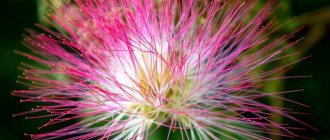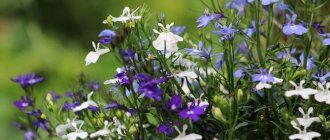Since time immemorial, beans have been a crop that people in almost all corners of the world considered very useful and used as food. Today it is included in the top ten most valuable food products, but modern housewives have given a special place to green beans. It is not surprising that today the cultivation of green beans is becoming a popular business among farmers who are looking for ideas on where and how to make money for a pensioner or the unemployed (after all, you can make good money selling beans, and besides, the technology for growing beans is no more complicated than, say, the technology for growing onions on greens). Therefore, we invite you to adopt this idea, and you will find tips for its implementation by reading the article.
Asparagus and capsicum - what's the difference?
Not everyone, even an experienced gardener, can explain the difference between different types of beans, considering that beans are beans in Africa. Therefore, before we consider the nuances of implementing the project of growing beans at home, let’s figure out what is the difference between asparagus and green beans? Let’s say right away that the difference is small, but there are some features. Let's start with green beans.
In general, this crop from the Legume family has more than 50 different varieties, growing both in the form of bushes and in the form of climbing vines, which, in turn, are divided into three types:
- Hulling crops, which are grown only for the purpose of producing legumes (they have a parchment protective layer that improves the preservation rate, and the main feature is that they are exclusively late-ripening crops, which in the climatic conditions of the central Russian Federation most likely will not have time to ripen. Accordingly, There is no point in planning to grow green beans in open ground for grain, as such an undertaking will fail);
- Semi-sugar (they are characterized by the presence of coarse fibers, which must be removed before preparing the pods for food. They can also have a protective layer, and the ripening period ranges from 100 days (each variety ripens within a certain period);
- Sugar (they lack a protective parchment layer and have a very delicate taste, which makes them very popular and widely used in cooking).
In addition, all these varieties, depending on the terms of maturation, can be divided into types:
- Early ripening;
- Mid-season;
- Late ripening.
By the way, as already noted, the climatic conditions of central Russia are not very suitable for the ripening of late-ripening bean varieties. Therefore, if you are a representative of these latitudes, then for growing beans in open ground it is best to pay attention to early and mid-ripening species that can ripen and produce a good harvest.
As for the general characteristics, everything is simple - green beans must have the following parameters:
- The length of the pods is no more than 40 cm;
- The shape of the pods is in the form of a thin tube or flat;
- Should be juicy;
- Sweetish in taste;
- Do not have hard fibers.
These pods can be boiled, stewed, or used as a side dish for meat, fish, and poultry. They can be added to salads. They lend themselves well to freezing and canning. Actually, these beans are often called asparagus beans, but this is not entirely true.
Although they are almost identical in appearance, the asparagus subspecies of beans has its own characteristics and is different:
- The presence of weakly expressed grains inside the pod;
- Softer fibers in the pod structure;
- Rich and sweet taste.
Thanks to these qualities, green beans, unlike green beans, are well suited for consumption raw. Therefore, if we are talking about growing beans as a business, then the difference still matters. After all, chefs at high-end restaurants who may become potential buyers can probably tell the difference between green beans and green beans. Therefore, to get such clients, you need to have a good understanding of the types and subspecies of beans. Moreover, the technology for growing green beans and asparagus is identical.
Harvesting
Regular harvesting is the main condition, subject to which you can obtain high quality products. Three weeks after flowering, ovaries will appear on the bushes, which must be removed after 10 days. The constant collection of pods allows new ones to emerge, which leads to increased yield.
Beans should be harvested selectively during milk ripening (no need to wait until the beans become hard). The size of the pods during this period will be about 10-20 cm. The seeds that are located inside should be the size of a wheat grain.
Growing bush and climbing varieties is slightly different. During the period when the climbing bushes are level with the support, pinching the crown will be required. Such an event has the following advantages:
- the height is limited, making fruit harvesting easier;
- the bush takes on a lush shape, since after pinching, active growth of shoots on the sides begins.
Since climbing beans can grow up to three meters, they definitely need support. Tall and strong products should be used as a supporting pillar. The following options can be used as supports:
- various designs for fencing or fences;
- staircase structures;
- walls of gazebos and other buildings;
- lower shoots from trees.
Beans can grow next to different types of plants because they affect the accumulation of nitrogen in the soil. However, next to branchy trees there may be excess shade for beans, which can lead to problems with harvesting fruits and eliminating dried bushes. Therefore, it is recommended to plant beans in a well-lit area.
Also, many gardeners use chain-link mesh as a support. When choosing this design, you should ensure that it is well fixed. Otherwise, heavy bean bushes may overwhelm the shaky structure. It should also be taken into account that dried remains of vegetation are quite difficult to remove from the cells.
It is allowed to use trellises, which are made by using a pair of posts (wood or metal is allowed) that are well fixed in the ground. A wire should be stretched between the posts. You can use twine or mesh.
Which varieties of green beans should you prefer?
When choosing varieties for growing green beans from seeds, you must take into account the climatic conditions of the region where the crop will be grown, the taste qualities of the selected variety, and, well, the variety of the plant. That is, will it be a bush form or a climbing one. Here I would like to note that, having given preference to growing bush beans, you need to be prepared for the fact that you will need large beds. Of course, this is not a problem if the plot is large and there is enough land. But if you need to save space, for example, to implement the idea of \u200b\u200bgrowing dill at home, or for growing Iceberg lettuce from seeds, or some other useful greens, then a climbing variety that grows well on vertical supports will be a more suitable option. True, if you choose a climbing variety of beans, you need to be prepared for the fact that it will cause a little more trouble than bush beans. After all, plants that can grow up to three meters or more will need to be provided with support. In addition, they must be very strong in order to hold a huge amount of green mass, and tall. For this you can use:
- Existing structures on the site. For example, a staircase, a fence, a fence, a wall of a house or a gazebo. By the way, if you organize the cultivation of red beans, which have very beautiful flowers (pink, red), then on such supports you can not only get a good harvest of beans, but also use the plant as a landscaping element;
- Wooden poles of at least two meters (they can be assembled in the shape of a hut, or installed in a U or T-shaped post, onto which twine is tied, hanging directly to the plants). As the beans grow, they will cling to them;
- Trellis, which are made of two posts, between which wire or twine is stretched in several rows;
- Strong, tall plants, such as sunflowers. Sunflower seeds are sown before planting beans. And when its height reaches 8 to 10 centimeters, beans are planted. But as they say, it's worth it, because growing climbing beans is much more cost-effective. After all, from one three-meter stem you can get many times more bean pods than from one small bush 40-60 centimeters high.
Popular bean varieties
Experts involved in the industrial cultivation of beans are confident that selection does not matter when choosing a variety. That is, they claim that for growing green beans in open ground in different latitudes of our country, both domestic seeds and seeds of Dutch, Italian, French or any other selection are equally suitable. Moreover, in the gardens of Russian summer residents, exotic subspecies of green beans are increasingly found, for example, long-podded cowpea, which came to us from Asia. And although growing cowpea beans is only possible by seedlings (its heat-loving nature does not allow the pods to ripen when sown in open ground), domestic gardeners are not afraid to experiment and get good results. Considering the above, we further suggest that you familiarize yourself with the list of the best varieties of green beans and their characteristics:
- Bona. An early-ripening, low-growing (height - about 40 centimeters) variety of domestic selection with a ripening period of 55 to 65 days after sowing the seeds in the beds. The pods are elongated, round in shape with a slightly curved tip, 15 centimeters long. The pods are tender and juicy, without fibers. The variety adapts well, is resistant to diseases and is capable of producing high yields in every region of the Russian Federation. The pods and beans are suitable for consumption;
- "Mushroom aroma" If you are a big fan of mushrooms, but you don’t have enough money to grow champignons as a business (or other mushrooms), start growing an early-ripening, bush variety of asparagus beans with a mushroom aroma. It is characterized by high yield and high disease resistance. From sowing to ripening you need to wait 60-65 days. The pods are 12-13 centimeters long, the plant grows in the form of tubes. They are very juicy and have no fibers. The variety is considered one of the best used in conservation;
- Blue Lake. A climbing super-early variety whose bushes grow to a height of more than one and a half meters. Ripening, after planting the seeds in the ground, occurs after about 50 days. It has fairly large pods 16 centimeters long, which are distinguished by a bright green hue, an even and smooth structure and a complete absence of hard fibers. In fact, that’s why it is often used as a dietary, low-calorie product. The variety bears fruit well provided there is sufficient lightening, high soil moisture and regular fertilizing. Therefore, when choosing a plot of land for growing beans of this variety, you need to take these nuances into account;
- Sweet courage. Green beans of this bush variety are distinguished by long (14-17 centimeters) bright yellow cylindrical pods with a smooth bend. It has a very delicate taste and a large vitamin composition. Sweet curage has a very short growing season, so that ripening occurs within 41-50 days after germination. The plants themselves are very compact, their height reaches no more than 40 centimeters;
- Neringa. This early variety is distinguished by its ability to bear fruit very quickly and abundantly, which allows you to harvest the entire harvest at once. Accordingly, the cultivation of Neringa bean variety is very suitable for commercial purposes. That is, having collected the entire harvest of beans, you can send it for sale, and on the freed plot you can begin to implement the business idea of \u200b\u200bgrowing celery or some other early ripening crop that can be grown in seedlings. In addition, the variety is undemanding to climatic conditions - it tolerates both heat and not very high temperatures equally well and is rarely susceptible to disease. The fruits of the Neringa variety are pods 16 centimeters long in the form of a thin, rather fleshy seed tube of small diameter, which are distinguished by their juiciness, the absence of hard fibers and a parchment-like taste. Fruiting of asparagus beans begins 55 days after planting;
- Pencil Pod Black Wax. Representative of the Italian selection. Mid-season bush variety with a ripening period of 60-65 days from the moment of planting. The bushes are about 40 cm high and are characterized by high productivity, good endurance and compact parameters. The pods of ripe asparagus, 15 centimeters long, have a light yellow color, have excellent taste and retain their presentation for a long time, so the variety will be an excellent choice not only for growing beans at home for personal needs, but also for sale;
- Mascotte. The variety of French selection is notable for the fact that it has very compact bushes that can be grown not only in the garden, but even on the windowsill or balcony. It turns out that even without a plot of land, you can provide fresh and very appetizing pods to your table all year round. Of course, if you are not lazy and follow the conditions for growing beans. Well, a high yield will be ensured by the genetic tendency of the variety to bear abundant fruit. By the way, the small green, crispy, fiberless pods of Mascotte beans are a favorite delicacy of the French;
- Fortex. Another variety of French selection, but already late. Since the growing season of this plant is 75-80 days, it is recommended for beds in the southern regions of Russia or for growing beans in a greenhouse. Fortex pods are long (20-30 centimeters) with tender pulp and no fibers. They have a very bright taste, do not require complex processing before consumption, and contain many useful substances. You can eat beans, which after ripening acquire a beautiful chocolate color;
- Kentucky Blue Pole. A persistent, unpretentious and high-yielding variety of American origin, very much reminiscent of the domestic selection of green beans “Blue Lake”. Its green pods, up to 20 centimeters long, are sweet and very juicy. Gradual ripening lasts up to 65 days. The bushes grow very tall up to 2.5 meters and higher; this plant will need supports;
- Gold Mine. The peculiarity of this variety is that its pods are very sweet, so it is worth growing if there are children in the family. They will definitely like these beans. As for the technical characteristics, this is an early ripening bush variety with a growing season of about 55 days, characterized by abundant fruiting. The pods on powerful, upright growing bushes are tied directly in clusters, so that 600-800 grams of product can be collected from each plant, which makes growing Gold Mine beans very profitable;
- Fakir. Beans are a mid-season variety that belongs to the Vigna group (a legume with abnormally large pods). In this case, the length of pods with a diameter exceeding 10 millimeters reaches 50 centimeters. At the same time, their flesh is tender and juicy, and there is not even a trace of fiber. Since the variety was developed by domestic breeders, it showed excellent results in Russian gardens and summer cottages, delighting gardeners with abundant harvests and the absence of diseases. To grow Fakir you will need supports;
- Asparagus Yardlong. A classic asparagus variety of the Vigna subspecies with a growing season of about 80 days. That is, the plant belongs to late-ripening varieties. Therefore, growing and caring for beans in open ground is not recommended, especially when it comes to regions with a cool climate. You can, of course, try to grow it using seedlings. But in this case, you will have to tinker a little (the seeds are planted in separate pots (special peat or plastic with a volume of 0.5 liters), to a depth of 2-2.5 centimeters. After about 6-7 days, the seeds will sprout together and begin to grow. During this period, they need a lot of light, heat and moisture. After a month, the plants can be planted in open ground. The climbing stems of this variety of asparagus can reach a length of up to four meters in height. Therefore, when planning its cultivation, you need to take care to provide the beans with strong supports, because after When the harvest ripens, they will also have to keep giant pods (the length of which is up to 80 cm).The Asparagus Yardlong variety is considered very unpretentious, protected from diseases, and high-yielding.
Beneficial features
Green beans beneficial properties
Beans contain B vitamins, ascorbic acid, protein, insulin, mineral salts and other beneficial substances.
Related article:
Beans - how and when to sow, cultivation and care
Beans are a healing product, improve metabolism, have a beneficial effect on the nervous system, and lower blood sugar. If you consume only 150 g daily, your blood cholesterol levels will significantly decrease within a month.
Growing technology
If you have never dealt with growing garden crops, and especially if you have no experience in growing beans, it doesn’t matter. After all, this is not at all difficult and, as experienced summer residents say, even a complete amateur can cope with the task.
Preparing for landing
The main thing that you need to take care of first is the correctly selected place for planting beans. It must meet the following parameters:
- The area should be sunny, protected from the wind;
- The soil is more or less loose (green beans do not like to grow on clay soil, since it does not absorb water well) and nutritious. If cultivation is to be done in the northern regions, then it is better to give preference to an area with sandy soil (it warms up faster).
Previously, cabbage, potatoes, and tomatoes were grown on the site, which are good precursors for green beans. It is recommended to prepare the garden bed in the fall. When digging the bed into the soil, potassium chloride and superphosphate are added at the rate of 20 and 30 grams per square meter. In the spring, the bed will only need to be loosened.
The second stage of agricultural technology for growing beans is preparing the seeds. Before planting beans:
- Sorted (spoiled or insect-damaged beans are removed);
- Soak in water overnight (after this procedure the beans will germinate faster);
- Immediately before immersion in the soil, the seeds are dipped in a solution of boric acid (this is necessary to protect the seedlings from insect pests).
After the preparatory procedures, the seeds are stuck into prepared, well-watered soil to a depth of 5 centimeters, maintaining a distance between plants of at least 15 centimeters. At night, the bed should be covered, since the temperature is not yet stable and unexpected frosts can harm the crops. By the way, if the temperature on the soil surface is lower than 10-15˚С, then you should not rush with sowing.
Preparing the bed
Preparing the soil for planting these beans begins in the fall. The ground is thoroughly cleared of weeds, dug up, and then, in order to create ideal conditions for planting the plant, the following is added to each square meter:
- 4 kg of humus;
- a spoonful of saltpeter;
- a spoonful of potassium chloride;
- a few tablespoons of dolomite flour;
- a spoonful of superphosphate.
In the spring, when preparing the soil for sowing, you need to dig up the soil again and fluff it with a rake. If the soil viscosity is high, add a little sand (5 kg per square meter).
Bean care
All you need to get a good harvest of green beans is on time:
- Loosen the soil;
- Remove weeds;
- Apply fertilizing;
- Make sure there are no pests.
In general, if you analyze the step-by-step agricultural technology for growing carrots, you can see that it is almost identical to the agricultural technology for growing beans. For example, both carrots and beans need to be loosened from the moment they emerge; both crops do not tolerate proximity to weeds, do not like excess moisture, etc. The only difference is the installation of supports for climbing varieties of beans. Fortunately, carrots don't need any support. But let's get back to the beans.
3-4 weeks after the seedlings appear, the plants are fed. This is done in two stages:
1. At the first stage, the beans should receive a full range of fertilizers for the care of legumes. But, if the beans are climbing varieties, then in addition to the main complex they are given fertilizers rich in nitrogen:
- Before hilling;
- During the flowering period (mid-July);
- During the ripening period (early August).
2. At the second stage (about three weeks later), a second feeding is carried out to form fruits. This time, the plants are enriched with phosphorus, magnesium and potassium, which are contained in sufficient quantities in ordinary wood ash.
Finally, you need to be very careful when applying fertilizer. After all, bean leaves are very delicate and can get burned if fertilizer gets on its surface.
Preliminary seed preparation
There are several possible options for preparing seeds for planting:
- planting in well-watered soil;
- pre-soaking;
- preliminary germination of seeds.
For the first method, it is enough to simply ensure that the seeds are intact, without caterpillars or any other insects on them. Then water the soil generously and plant the seeds.
Shoots will appear faster if you pre-soak the seeds. To do this, pour the seeds with hot water for 15 minutes. After this, it is imperative to disinfect them in a solution of weak potassium permanganate.
Disinfection of soil and seeds is necessary to protect still immature seedlings from insidious pests.
If you germinate the beans first, you can get seedlings even faster. To do this, you need to inspect all beans for mold, wrinkles, damage, and remove debris.
All seeds that have passed the selection must be placed in one layer on a damp cloth. Next, you need to take another similar piece of fabric and place it on top. The top piece also needs to be wet. It is very important here not to overdo it with water, otherwise the seeds will simply rot.
After 24 hours, opening the fabric slightly, you will see that the beans have already sprouted the first sprouts. This means the seeds are ready to be planted. However, they will need to be planted very carefully so as not to damage only the emerging shoots.
Pests of green beans
The worst enemies of beans are slugs. Therefore, to avoid their appearance in the garden, you just need to promptly remove the weeds, which serve as a good shelter from the sun for slugs, and make sure that the soil is not waterlogged (frequent loosening will help get rid of arrogant humidity). If, despite all your efforts, slugs still settle in the bean bed, then the most effective way to get rid of pests is mechanical removal. They usually gather in the shade on pebbles.
Planting
Green Bean Seeds
Germination . Growing green beans is easy. Before planting, it is better to first germinate the seeds at home by spreading them on a damp cloth and rolling it into a tube. Place the napkin in a glass jar and spray it regularly to keep the napkin constantly moist. Cover the jar loosely with a plastic lid. When roots appear, the seeds can be planted in the garden. This way you can get a harvest 2 weeks earlier than without germination.
Related article:
Beauty beans: 7 best varieties of decorative beans
Growing beans in a greenhouse
We would like to note that the technology for growing asparagus beans in greenhouse conditions is practically no different from growing in open ground.
The only thing we recommend paying attention to is the choice of variety. Experts advise giving preference to early varieties. In addition, plants need to be planted in a separate box of the greenhouse (or along its edges along the ridges with the main crops, in case the main business project is growing greenery in a greenhouse as a business) with a calculation of no more than one plant per square meter. To prevent the plant from branching too much (the soil in the greenhouse is usually very good and the plants quickly grow green mass), you need to resort to removing side shoots from time to time, leaving 70-80 centimeters, leaving the first inflorescence. You also need to ensure that there is good air circulation between the bushes, a sufficient amount of light and, of course, a comfortable temperature.
Productivity
Productivity of asparagus beans
Many gardeners think that climbing varieties of asparagus beans have higher yields compared to bush varieties. This is probably true. After all, a powerful vine grows for a long time and can bear fruit for a long time. Bush beans quickly form a large number of pods, they ripen quickly, and the plant dries out. But it can be planted twice per season. Then the total harvest may be significant.
Recipes
Do you want to diversify your diet with interesting green bean dishes, but don’t know how? We will tell you how to do it in the most delicious and healthy way.
Korean salad
Ingredients for 4 servings:
- Green beans - 200 g.
- Onions - 70 g.
- Carrots - 100 g.
- Rice vinegar - 20 ml.
- Salt - 2 g.
- Sugar - 2 g.
- Garlic powder - 2 g.
- Ground coriander - 2 g.
- Ground red pepper - 2 g.
- Ground black pepper - 2 g.
Preparation:
- Wash the beans, cut off the tails on both sides, then boil them in salted water for 7 minutes. After this, drain the beans in a colander, wait until all the water has drained, transfer them to a separate bowl and let cool.
- Wash the carrots, peel and chop into strips. Place it in the bowl with the beans. Peel the onion, cut into thin half rings and add it to the same bowl.
- Then add sugar, salt, rice vinegar and spices: garlic powder, ground coriander, black and red pepper. Add seasoning to taste - it’s better to add some and taste, and add more if necessary.
- Mix everything and put it in the refrigerator to marinate for a day.
Garnish “Spring”
An incredibly tasty, simple and budget-friendly side dish with a spicy sauce.
Ingredients:
- Green beans - 0.5 kg.
- Garlic - 2 cloves.
- Fresh ginger, grated - 1 teaspoon.
- Fresh chili pepper - 1/4 pcs.
- Olive oil - 2 tbsp. spoons.
- Soy sauce - 1 tbsp. spoon.
- Wine or apple vinegar (or lemon juice) - 1 tbsp. spoon.
- Greens - to taste.
Preparation
Wash the green beans well, sort them, trim the ends. Place it in a pan of boiling, slightly salted water. Cook for 3-5 minutes. Then place them in a colander until the water has completely drained.
Mix oil, soy sauce, vinegar, finely chopped chili pepper, pressed garlic and grated ginger.
Place the vegetables in a convenient bowl, pour in the sauce, and mix well. Place in a heat-resistant bowl and place in an oven preheated to 200 degrees. Bake for 10 minutes. Before serving, you can sprinkle the finished dish with herbs to taste.











